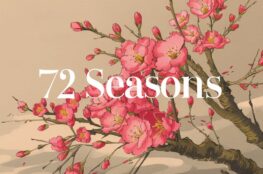In Japan, New Year’s day is bigger than Christmas day. We have a lot of traditional dishes prepared for the New Year, called Osechi Ryōri.
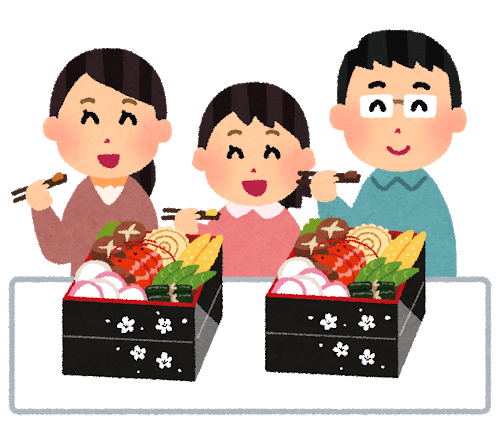
What is Osechi Ryōri (おせち料理)?
Osechi Ryōri (御節料理/おせち料理/おせち) are traditional Japanese foods to celebrate the New Year. We eat Osechi Ryōri during the first three days of January, so they are prepared in order to be preserved for at least for three days. They used to be foods not only for New Year’s celebration. At the beginning, they were the foods served for God on each seasonal festival. Gradually “Osechi Ryōri” became the word meaning the foods prepared for the most important seasonal festival; New Year’s day.
What is the meaning of each dish in Osechi(おせち)?
Each dish in Osechi Ryōri has a special meaning celebrating the New Year. I will explain each meaning of those special dishes that make up Osechi.
Kazunoko (数の子) / Salted Herring Roe
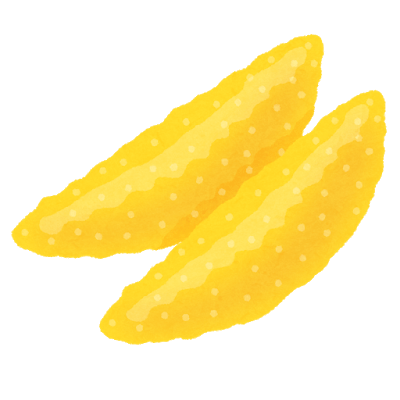
Kazunoko is salted herring roe/fish eggs. Since the number of eggs is large, it symbolizes a wish for the prosperity of descendants.
Tazukuri (田作り) / Teriyaki Dried Sardines
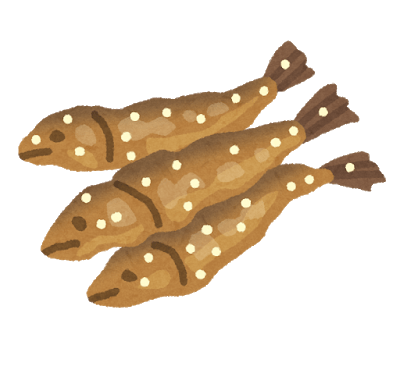
Tazukuri is dried small sardines roasted with soy sauce, sugar and sake, and sprinkled with sesame seeds. Since sardines were used as compost to fertilize rice fields in the past, it symbolizes a wish for a good harvest.
Kuromame (黒豆) / Sweet Black Beans
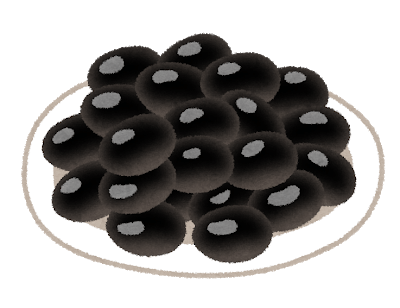
Kuromame is sweet black beans. Mame (豆) in Japanese means beans, but the word “Mame (まめ/マメ)” also means methodical or hardworking. This dish is eaten to pray for that we can work hard (マメに働く/まめにはたらく).
Tataki-Gobou (たたきごぼう) / Pounded Burdock
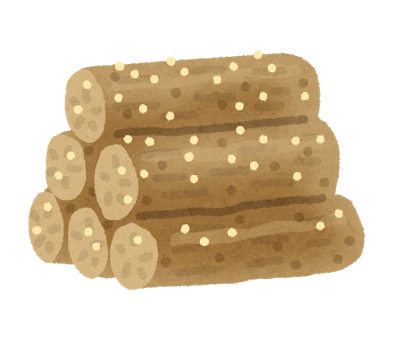
Gobou in Japanese means burdock, and Tataki-Gobou is pounded burdock. Since burdock roots grow deep in the soil, it symbolizes a stability and peace of the family.
Kōuhaku-Kamaboko (紅白かまぼこ) / Steamed Fish Cake

Kamaboko is steamed fish cake, and Kōuhaku means red (紅/こう) and white (白/はく). Red and white are the colors used for celebrations in Japan. Kōhaku-Kamaboko is steamed fish cake colored in red (normally looks more like pink) and white, and it symbolizes celebrations. Also the half moon shape of Kamaboko means sunrise.
Datemaki (伊達巻き) / Sweet Rolled Omelet

Datemaki is sweet rolled omelet. Since its rolled shape looks like “巻物 (Makimono)“; a hand scroll, it symbolizes a wish to enhance our knowledge.
Kobumaki (昆布巻き) / Rolled Kelp with Fish
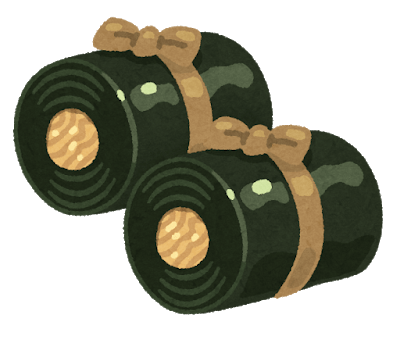
Kobu is seaweed or sea kelp, and Kobumaki is rolled kelp with fish in it. Since its name “Kobu” leads to the similar sounding word “喜ぶ (Yorokobu)”, meaning “joy“, it is considered as the food with good fortune.
Kurikinton (栗きんとん) / Sweet Chestnut Paste
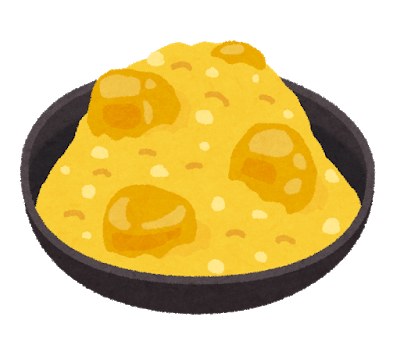
Kurikinton is sweet chestnut paste. Kinton is written as “金団” in Kanji. “金 (Kin)” means gold or money, and “団 (Ton)” means a group, so “金団” means a pile of gold, money, or treasure. Thus, this dish symbolizes a wish for a prosperous year.
Chorogi (ちょろぎ) / Chinese Artichoke
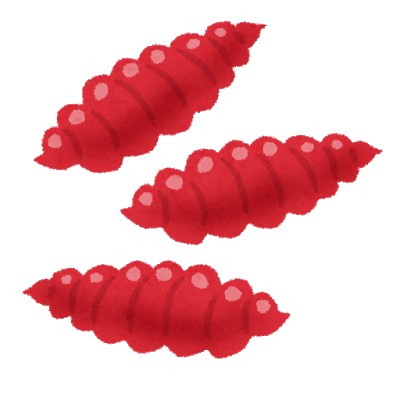
Chorogi is a Chinese artichoke. Since it is written as “長老喜” in Kanji, meaning “happy longevity”, it symbolizes a wish for a longevity.
Buri (ブリ) / Yellowtail
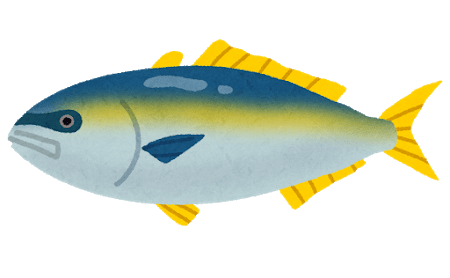
Buri means a yellowtail. Since the fish is celled by different names as they grow larger, it symbolizes a wish for promotions and success in life.
Tai (鯛) / Sea Bream
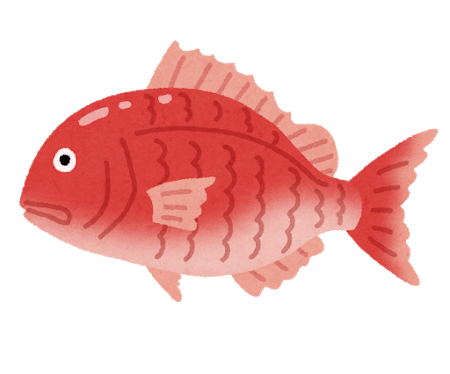
Tai is a red sea bream. The name “Tai” leads to the word “めでたい (Medetai)”, meaning “happy“. Also the red color is commonly used for festive events in Japan. Thus, red sea breams are considered as the food brings good luck.
Ebi (海老) / Shrimp

Ebi is a shrimp. Shrimps are considered as a symbol of longevity because the shapes of shrimps remind us of old people bent with age. Thus, it symbolizes a wish for longevity; wishing we can live long enough to have bent waist.
Renkon (れんこん) / Simmered Lotus Root

Renkon is a lotus root. Since lotus root has a lot of holes in it, it symbolizes a wish for good prospects for the future.
Satoimo (里芋) / Taro
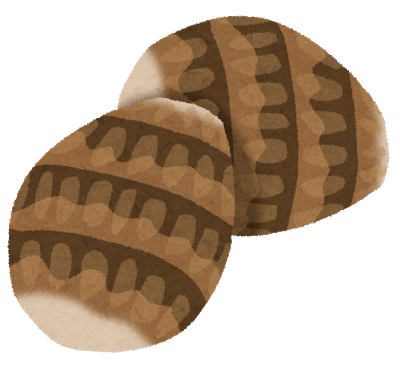
Satoimo is a taro. It is eaten to pray for the prosperity of descendants since a parent taro is normally accompanied with many small child taros.
Kōhaku-Namasu (紅白なます) / Japanese Radish in Vinegar

Kōhaku means red and white colors, symbolizing celebrations. Kōhaku-Namasu is daikon radish and carrot salad in sweetened vinegar. The combination of red and white colors symbolizes happiness and celebration.
What is your favorite Osechi? Which Osechi will you eat first this year?
I wish you a happy new year!
良いお年を!
